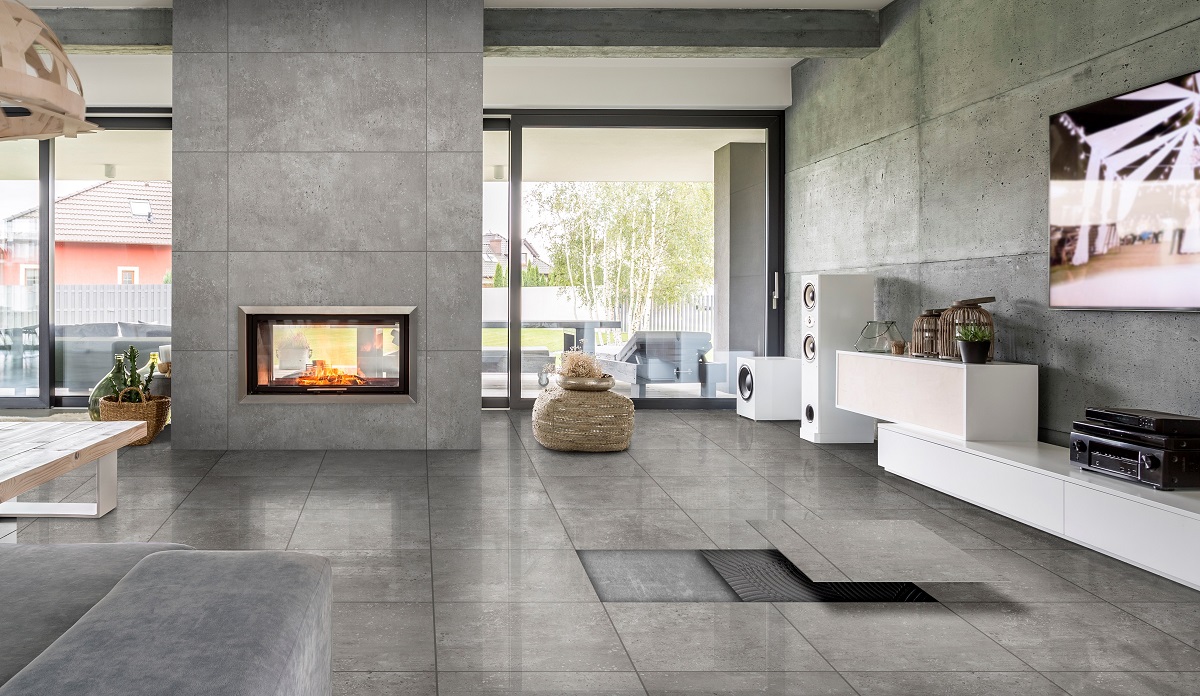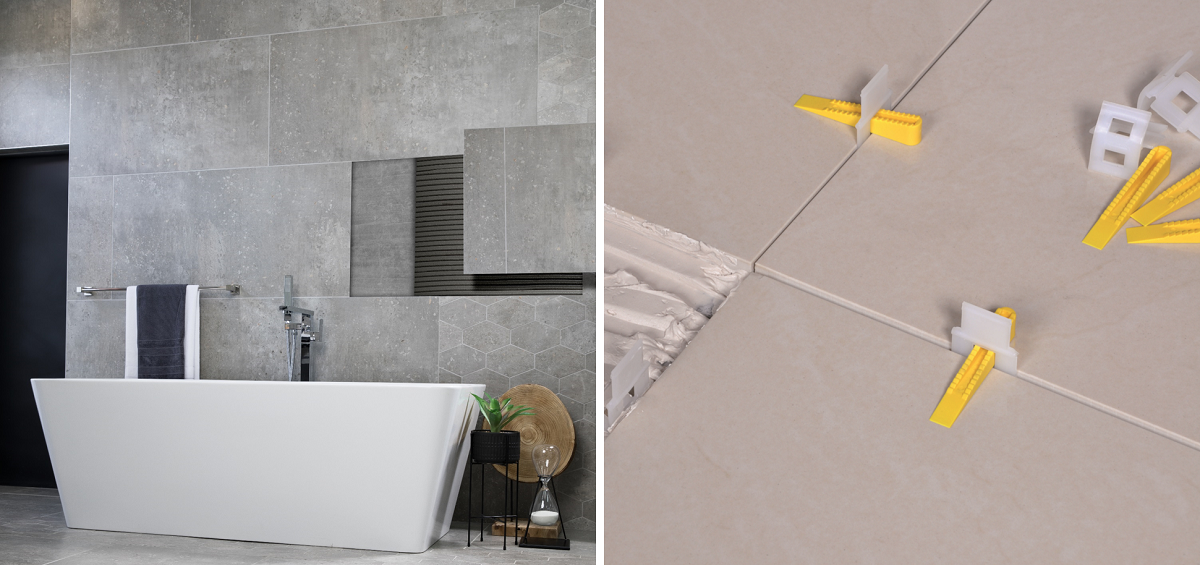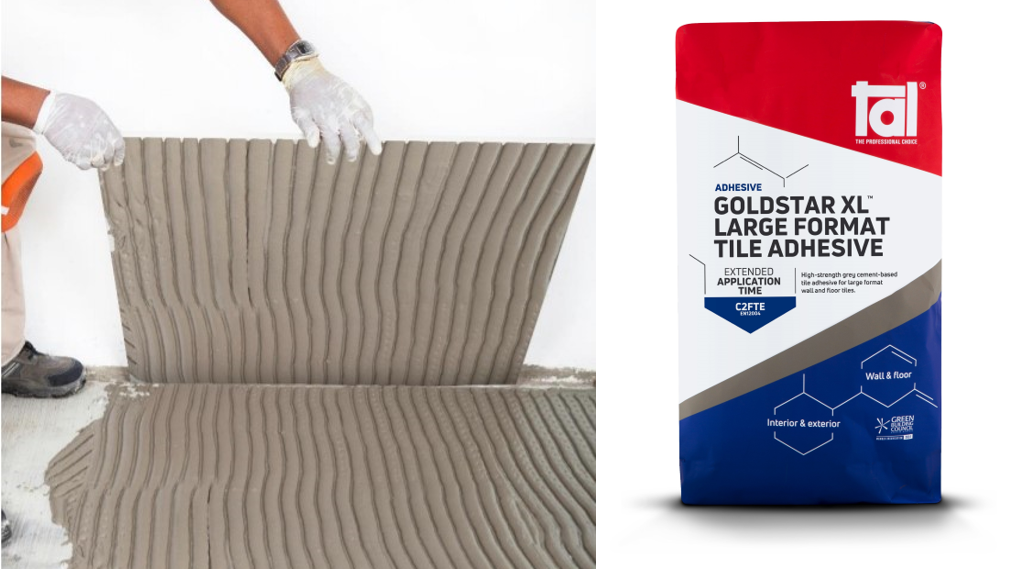TOP 4 TILING TIPS FOR INSTALLING LARGE FORMAT TILES
There is much discussion about large format tiles in the market as they grow in popularity, but what is a large format tile? By rough definition, a large format tile has at least one edge with a length greater than 600mm or a facial area greater than 3500cm², therefore a tile measuring 600 x 600mm or larger, is considered a large format tile.
Previously, only natural stones such as granite or marble, were available in these large sizes, having been cut into large slabs. Changes in manufacturing techniques have led to a rise in popularity and availability of porcelain and ceramic tiles in these larger formats. With the increased use of large format tiles by both the commercial and domestic tiling market, it is important to note the specialised requirements of fixing these. Consideration should be given to these top 4 tiling tips for installing large format tiles before starting your project.
Surface preparation

There are permissible manufacturing tolerances for ceramic and porcelain tiles, and large format tiles may have permissible surface flatness irregularities, i.e., the tile surface may be ‘curved’ or ‘bowed’. It is therefore vital that the substrate to be tiled is smooth and level by applying a self-levelling underlayment like TAL Screedmaster or TAL Superscreed SL to prepare the surface. This also prevents the excessive consumption of tile adhesive.
Limiting “lippage”

Lipping of tiles can occur on large tiles. Laying of tiles in a brick/running bond pattern should not be considered because of potential lipping caused by the curvature of large format tiles. We recommend a maximum offset of 30%.
The use of self-levelling spacer or clip systems will further assist with reducing ‘lippage” of tiles.
Adhesive system

Make use of a specialised tile adhesive designed for fixing larger tiles, such as TAL Goldstar XL, which offers a longer open time. This extra time allows for the ‘double-buttering’ technique where adhesive is applied on both the substrate and the back of the tiles to ensure full contact and a solid bed of adhesive behind each tile.
Tile and movement joints
The joint width for fixing large format porcelain tiles (including rectified tiles) should be no less than 3mm wide, and no less than 5mm wide for ceramic tiles.
It is important to note that when installing large format tiles, there is a smaller number of joints between large format tiles, as compared with the same area of normal format tiling, meaning that less stress (movement) can be accommodated at the tile joints and allowances need to be made for this. Modifying the grout with TAL Bond or TAL Bond Powder, will allow for more flexibility and bond strength within the installation.
Please also refer to the manufacturer’s instructions for specific details pertaining to the handling, cutting, cleaning and maintenance of these tiles.
For more information on our multi-level tiling systems, or for a bespoke specification on the installation of large format tiles for your project, contact the TAL Technical Advice Centre.
[Back]
blog comments powered by Disqus

